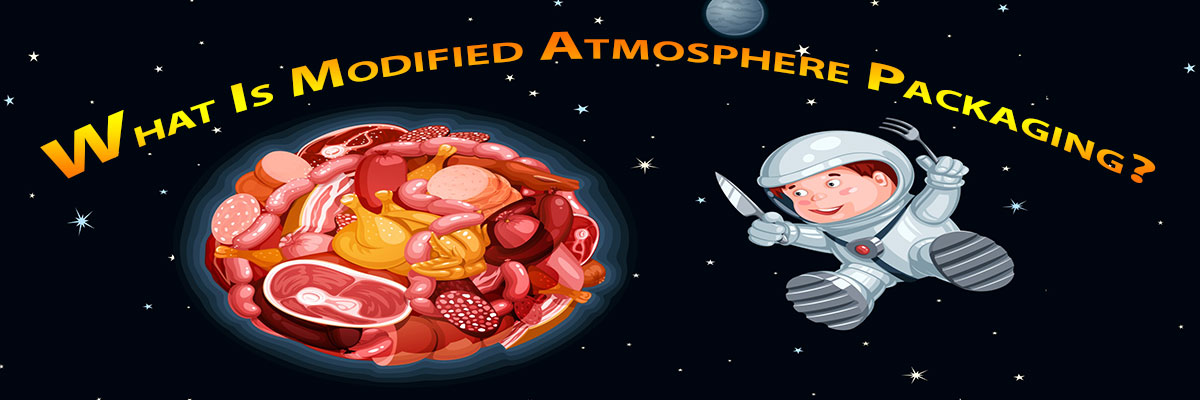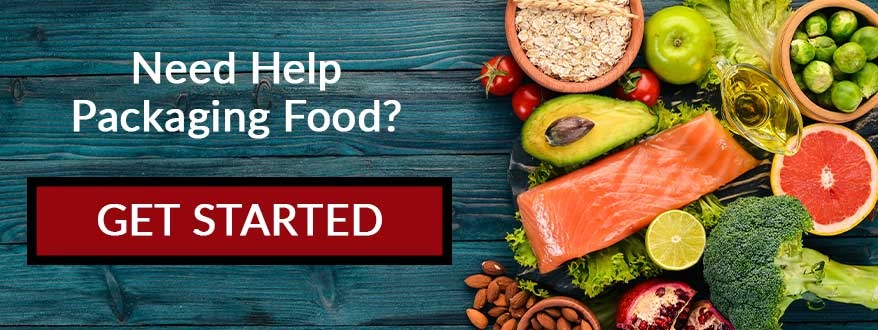What Is Modified Atmosphere Packaging?
Packaging Materials | The Business of Packaging | Packaging Design | Food Packaging
You are looking to find a better way to package your perishable foods. Perhaps you have been packaging food for decades, or you are a brand new food packaging start-up.
Either way, you want to find a way to increase the shelf life of your foods, prevent discoloring, preserve freshness and flavor, and ensure an aesthetically pleasing shelf appeal.
This is why of course, you have begun researching modified atmosphere packaging. From what little you know about the topic so far, you think it might be an improvement over your current packaging process.
But, it would help if you got a better understanding of what modified atmosphere packaging actually is. And luckily for you, we are here to help.
Industrial packaging has been working with fortune 500 and smaller food manufacturing companies for several decades now. During that time, we have learned everything there is to know about modified atmosphere packaging.
In this article, we will explain precisely what modified atmosphere packaging is. And, we will help you to figure out if it is the right food packaging solution for your products.
What Is Modified Atmosphere Packaging?
Modified Atmosphere Packaging (or MAP) is the practice of manipulating the atmosphere inside packaging containing perishable foods (for example, beef, pork, chicken, and fish). The goal of the process is to increase the shelf life of the product contained within.
MAP improves the shelf life and freshness of many foods. These include cheese, meats, fish, and other perishable food items. These foods are commonly packaged with oxygen, which is removed via MAP.
How Does Modified Atmosphere Packaging Work?
Oxygen produces lipid oxidation reactions. It also causes high respiration rates in fruit and vegetables. Increased respiration rates are to blame for shortened shelf life.
The presence of oxygen encourages the growth of aerobic spoilage. The potential formation of other unwanted microorganisms may also occur.
By reducing the amount of oxygen and replacing it with other gases, we can reduce or delay unwanted reactions. To change the atmosphere of a package, the oxygen contained within must be reduced or removed.
The MAP process lowers the volume of oxygen contained within the empty space of the packaging containing the product. It can also prevent the formation of water vapor. The oxygen inside of the package is often replaced with other gases.
From linde-gas.com:
"MAPAX gas mixtures usually consist of the normal atmospheric gases such as carbon dioxide (CO2), nitrogen (N2) and oxygen (O2). Microbial growth can also be inhibited to a certain extent with the help of other gases such as nitrous oxide (N2O), argon (Ar) and hydrogen (H2).
These gases can be applied individually or mixed according to specific ratios. CO2, for instance, is most effective in inhibiting microorganisms (such as mold and other common aerobic bacteria). It does this by dissolving into the food’s liquid and fat phase, thereby reducing its pH value. It also penetrates biological membranes, causing changes in permeability and function.
As an inert gas, nitrogen gas is primarily used to replace oxygen in packaging, thereby preventing oxidation. Owing to its low solubility in water, nitrogen also helps to prevent package collapse by maintaining internal volume."
Stabilizing the controlled atmosphere storage of the gases contained inside the package is possible by using active actions. These actions include gas flushing and compensated vacuuming. The process can also be achieved by utilizing “breathable” shrink wraps or packaging films.
Looking To Outsource Your Food Packaging?
Pros Of Modified Atmosphere Packaging
The contained atmosphere within the package provides the product with extended availability. As MAP does not need chemicals to preserve the freshness of the product, it has greater appeal.
The processing and marketing of foods are enhanced due to modified atmosphere packaging. MAP provides the consumer with fresh and delicious foods. These foods often exceed the customer’s expectations.
When it comes to brand awareness, consistent quality, and fresh products, MAP technology is a true win-win. Consumers and food companies alike seem to enjoy the benefits of MAP.
Modified Atmosphere Packaging Pros
- Longer shelf life
- Enhanced visual appeal
- Stays fresh longer
- No chemical preservatives
- Long-lasting flavor preservation
- Sustained nutritional content
Benefits Of Modified Atmosphere Packaging For Retailers And Suppliers
Extending the shelf life of various products is appealing to consumers. MAP packaging gives processors of natural and non-processed foods an upper hand in their supply chain. Fresh food means less rotation of packages. This means much less waste. Excess human labor is reduced (especially when using collaborative robots).
Distribution territories expand, and a better variety of products are available to consumers. Manufacturers are allowed to take advantage of longer shelf life cycles. This means a reduction in production demands.
Cons Of Modified Atmosphere Packaging
When it comes to the downsides of MAP, one of the primary concerns is cost. There are cheaper ways to package food. When health and freshness are not significant concerns, processed alternatives can save money.
The American market and demand for heavily processed foods are continually growing. Many consumers demand foods loaded with salt, fat, and lots of added sugars. Retailers can cut costs by offering these processed alternatives.
That being said, the technologies of MAP are evolving. Healthier and fresher food products made possible by MAP will be able to compete in costs with their processed counterparts as new advancements are made in MAP technology.
A growing segment of the American consumer base is shifting towards healthier MAP packaged goods. Time may tell a different story about the battle between processed foods and more nutritious options as time progresses.
Modified Atmosphere Packaging Cons
- More expensive
- Less consumer base
- Complicated to package
- A higher level of quality assurance required
Is Modified Atmosphere Packaging Safe?
As the saying goes, "safety first." MAP is not to be considered a fail-safe when it comes to food safety. While MAP allows for longer shelf life and can prevent certain types of spoilage, it is not guaranteed.
Some foods packaged with MAP may actually result in additional risk. MAP may allow for the formation of pathogenic organisms. There is a host of possible contamination issues with pathogens, including but not limited to L. monocytogenes, Y. enterocolitica and A. hydrophila. MAP packaged produce is particularly at risk.
However, while these risks do exist, actual cases are few and far between. They have been relatively uncommon since the inception of the use of modified atmosphere packaging.
From Food Safety Magazine:
MAP and other forms of reduced oxygen packaging minimize the activities of spoilage organisms that normally give warning about potentially unsafe conditions. Concerns about modified atmosphere packaging are well founded because of the potential for growth of anaerobic or facultative anaerobic bacteria, such as Clostridia, which could cause food poisoning before food spoilage was organoleptically detectable. Reduced oxygen packaging contributes to the potential of botulism (caused by Clostridium botulinum) and other pathogens by providing greater time and opportunity for outgrowth.
The U.S. Food and Drug Administration (FDA) has been working in concert with the Institute of Food Technologists (IFT) and recently published a report entitled, "Analysis and Evaluation of Preventive Control Measures for the Control and Reduction/Elimination of Microbial Hazards on Fresh and Fresh-Cut Produce." In this study, it is noted that although only two MAP produce products (coleslaw mix and ready-to-eat salad vegetables) have been implicated in foodborne illness outbreaks to date (botulism and salmonellosis), the potential for growth of pathogens is quite significant, especially in the fresh-cut produce industry.
Where Can You Learn More About Modified Atmosphere Packaging?
Now that you know what modified atmosphere packaging is, how it works, and its pros and cons, you should know if MAP packaging is suitable for your products.
But, if you are interested in using MAP packaging on your packaging line, you will need other components such as modified atmosphere packaging systems, MAP packaging machines, utilities, materials, and the right mixture of gases.
So, where can you learn more about these required elements? Suppose you would like to learn about the other items necessary to implement modified atmosphere packaging for your products correctly.
In that case, you will want to read this companion article, What Elements Do You Need For Modified Atmosphere Packaging?
With the information in this article, you will have everything you need to know about MAP packaging and how to implement all of the required elements for modified atmosphere packaging on your packaging line.
About Nathan Dube
As the Digital Marketing Specialist at Industrial Packaging, I am honored to create content for such a phenomenal company and work with one of the greatest teams in the Packaging Industry. Whether creating a video, writing blog posts or generating other pieces of content and multimedia, I am always excited to help educate and inspire our prospects and clients to reach their highest potential in regards to their packaging processes and needs.




